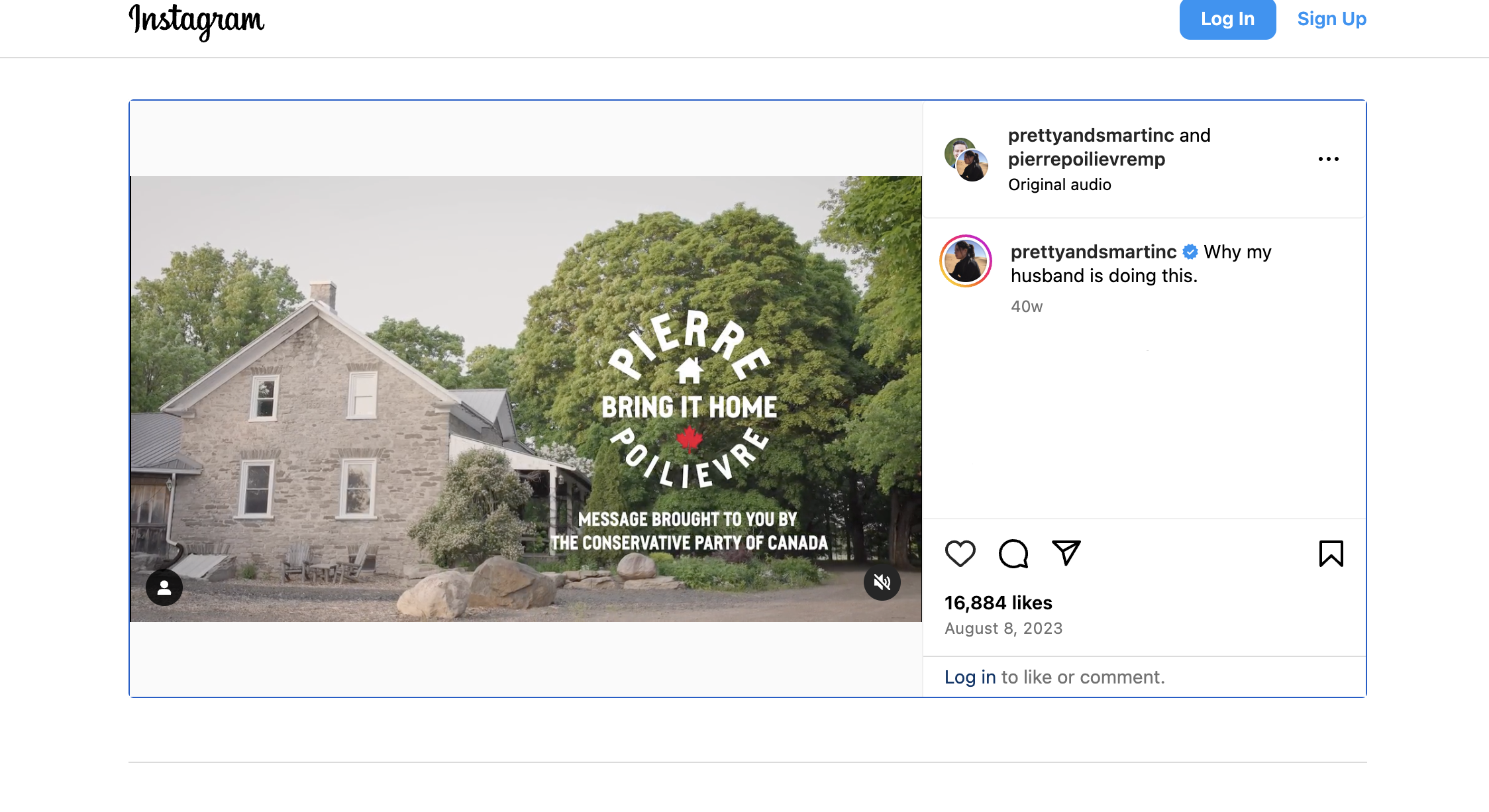Political advertising campaigns have come a long way, especially in the digital age. Here’s a closer look at today’s world of digital advertising for politics.
As voters in the US head to the polls in late 2024, the political race is heating up. Parties are scrambling left and right, rallying citizens in their favor as they elect their leadership for the next four years.
The fast-paced political landscape (marked by the internet age) is a land of opportunity and battleground for all sides. Campaigning to voters is more engaging and impactful than in any previous era.
Digital advertising for political campaigns has come a long way since its humble beginnings. The modern era of politics is marked by Twitter (or X) wars, TiKToK campaigns, and a dominant social media presence – so much so that the digital aspect of campaigns is now an integral part of political marketing and campaign strategy.
Here, we’ll take a closer look at how political advertising in campaigns (specifically, the digital side) operates and how you can leverage it in your campaigns.
What is political advertising?
Political advertising includes any advertising conducted to influence public opinion, such as supporting or opposing a candidate for nomination or election to a public office or office of a political party.
This includes the preparation, placement, promotion, publication, or dissemination, of any means of a message for political purposes. Political advertising can also extend to public issues beyond party representation such as referendums on local issues.
Generally, political ads are either issue-based or image-based. Issue-based advertising typically provides voters with insights into political parties and candidates’ positions. This includes political and policy matters, legislative priorities, and views on issues of public interest.
On the other hand, image-based advertising is used to introduce, define, and humanize candidates by highlighting their values and personality traits, as well as their personal and professional qualifications. In turn, it also helps foster a more personal or emotional connection between voters and candidates.
Political advertising can be delivered through various means and practices. These can include traditional practices such as print media, television, radio, direct mailings, seminars, and events (such as speeches at rallies).
It can also be through political digital marketing such as display advertising, social media marketing, native advertising, email marketing, and more.
Types of digital political campaign advertising
There are various ways you can leverage the digital world to execute effective political marketing.
Display ads
Display ads are visual ads placed on websites, apps, social media networks, or any channels that are clickable and redirect users to dedicated landing pages. Banner ads, mobile leaderboard ads, desktop ads, and more are examples of display advertising. They are effective in targeting constituents most likely to engage with your campaign.
Native ads
Native ads are types of paid digital advertising in which the ads match the content, visual feel, and form of media they appear in. Native advertising blends in seamlessly with its environment – including online news sites and social media platforms.
CTV and OTT ads
Connected TV (CTV) ads are television content ads streamed on smart TVs through connected devices. These connected devices could be internet-connected television devices (such as Roku, Amazon Fire Stick, Apple TV or Chromecast), gaming consoles (like Xbox or Playstation), or even built into the television itself (such as the operating systems on Vizio, Samsung, LG, and Sony TVs).
In other words, CTV ads refer specifically to ads on internet-connected devices that connect to TV screens for viewing.
These are not to be confused with over-the-top (OTT) ads which are digital ads (which can be video-based or audio-based) delivered directly to viewers over the internet, bypassing traditional distribution channels like cable or satellite providers. It’s delivered through a variety of channels or streaming services and apps (such as Netflix, Amazon Prime Video or Hulu).
Its name refers to the service delivering ads “over the top” of another platform, which in this instance is the internet service provider.
Video and audio ads
As the name suggests, video ads and audio ads refer to the promotion and delivery of the ad or campaign via video or audio content. It utilizes various video channels (like paid video hosting sites or geotargeted preroll video ads) or audio channels (such as radio, music streaming services, podcasts, and smart speakers) to reach and engage target audiences.
A YouTube video campaign of the Biden-Harris administration for the 2024 US Presidential elections
Social media ads
Social media is now an essential tool for digital political campaigns. You can make use of paid social (paid promotion on social media sites via ads or sponsored content), owned social posts (political entities create their social posts on their owned channels), or influencer marketing (partnerships made with popular social media users where they promote your campaign).

Conservative Party of Canada leader Pierre Poilievre promotes his campaign via Instagram
PPC ads
As the name suggests, pay-per-click (PPC) refers to advertising that is only paid for every time a user or target clicks on the ad. In other words, an advertiser pays a fee each time one of their ads or campaigns is clicked. It’s essentially a method of “buying views or visits” to your campaign, in addition to driving visits organically.
Leverage the power of political digital advertising with illumin
illumin has launched illumin Elect which includes a direct, in-platform integration to L2 Data’s comprehensive voter database. This new integration dramatically reduces the turnaround time for building and utilizing custom audiences for political campaigns, revolutionizing the landscape of political campaign marketing.
illumin Elect maximizes the capabilities of its existing connected journey advertising platform, facilitating efficient customization of political advertisements. Marketers gain access to integrated social media campaigns across Meta and Instagram, enabling tailored political campaigns that engage voters throughout the entire marketing journey.
Campaigns can efficiently reach custom audiences with precise targeting options, including first-party data uploads for retargeting and Point of Interest targeting for location-based segmentation. Additionally, illumin integrates with leading email service providers, empowering campaigns to target their specific first-party donor and supporter lists accurately.
Step up your political digital advertising game today with illumin. Request a demo today.
The value of digital advertising for political campaigns
Leveraging the power of online advertising has many benefits. There is documented growing spend and potential in digital advertising for politicians.
A recent eMarketer study suggests total US political ad spending will hit over $12 billion in 2024, up nearly 29% from the 2020 US presidential election. While traditional media continues to take up the bulk of that spending, digital will have a much larger share this American election cycle.
Digital ad spending itself will spike a dramatic 156% over 2020 levels to reach $3.46 billion USD. Digital will make up 28.1% of total political spending in 2024 versus 14.1% in 2020. A key driver of digital ad spending is CTV, making up $1.56 billion, up a staggering 506.3% over 2020.

As a result of increased political ad spending, there have been increased investments toward more avenues and improved capabilities for digital marketing in politics that go beyond linear channels.
Ad-tech firms (such as illumin) have been creating new audience segments for political advertisers to help campaigns reach viewers across CTV and other platforms. They have also introduced a way for national, state, and district campaign races to re-target ads based on whether someone has already seen a candidate or competitor’s ad.
Digital political advertising also offers candidates a different approach: it makes it easier to target voters more likely to vote for your preferred candidate. It’s also a measurable, dynamic way to engage target voters – especially since the majority of voters are now on social media and consuming digital content.
Challenges of digital marketing for political campaigns
With an ever-evolving digital landscape come hurdles and challenges that campaign managers need to keep in mind when leveraging digital for political ads. Here are some challenges of digital campaigns for politics.
Misinformation and disinformation campaigns
Ever heard somebody say: “Don’t believe everything you read on the internet”? The increasing trend and circulation of fake news, deepfakes, and even AI-generated content that are deemed false have made it more challenging for users to discern what is legit and what is fake online.
Many recent political campaigns center on misinformation and disinformation, sometimes intended as smear campaigns on opposing candidates or used as propaganda to push a particular message to constituents. A potentially greater threat also lies in generative AI tools’ ability to personalize misinformation, making it harder for social media platforms to moderate as it appears authentic.
These issues pose a risk to the authenticity of political content and as a result, voters may find it difficult to connect with the messaging. Worse, they could react negatively to a political campaign.
These issues have tainted the way voters perceive political ads, and they can easily be turned off by the content the moment they see it on their streaming services or social media (ultimately defeating the purpose).
Content moderation and guidelines
Political advertising on social media is a complex field that requires an in-depth understanding of various platform-specific rules and broader regulatory guidelines. Politicians and campaign managers must carefully navigate this landscape to ensure compliance and effectiveness.
Each platform has its own set of rules and legal restrictions for political advertising – these rules are essential to understand and adhere to to avoid potential penalties and consequences.
Many tech giants dealt with their fair share of political ad bans leading up to elections. For example, the possible ban on TikTok in the US could hugely impact political advertising for the upcoming presidential elections.
Microsoft’s TV advertising company, Xandr, banned political ads back in 2021. Meta had a weeklong ban on political ads leading up to the 2022 US midterm elections.
Campaign marketers must ensure their messaging and content are tailored to these guidelines. Depending on the type of content (as well as your ad campaign’s purpose), it may limit the scope of your messaging and how effective your ad campaign could be.
The cookieless movement
Digital marketers are on edge since Google announced its plans to deprecate third-party cookies on its Chrome platform. With Google delaying the cookieless transition to early 2025, the political advertising scene requires some pivoting and adjustments of its own. Specifically, the targeting capabilities used for reaching certain voters and constituents.
Many voters are more vigilant with their own cybersecurity and data privacy. Digital marketers working on political campaigns must consider cookieless options when running ads and attempting to target specific voters who may not necessarily consent to having their data and information stored for such purposes.
It’s also worth considering other methods and strategies for executing political ad campaigns. Harnessing the value of geotargeting strategies to appeal to specific voters in various locations can be effective.
Using contextual targeting (especially for those undecided voters) and investing in first-party data to ensure privacy compliance can also be an advantageous approach.
Final thoughts
Digital advertising for political campaigns has never been more prevalent and valuable in today’s electoral landscape. We expect an uptick of political ads popping in across all platforms, whether it’s digital or physical as we head closer to the election season. For those still on the fence about integrating digital advertising for political campaigning, now is the perfect time to consider them – especially as the scales tip fully towards digital in this advertising era.

To see more from illumin, be sure to follow us on X and LinkedIn where we share interesting news and insights from the worlds of ad tech and advertising.











